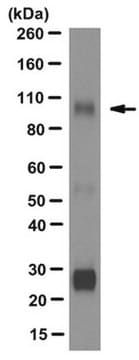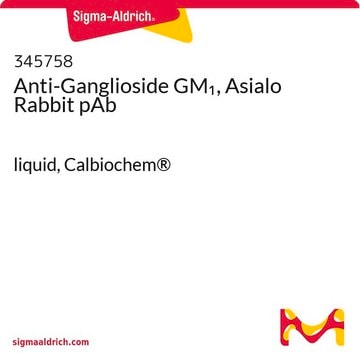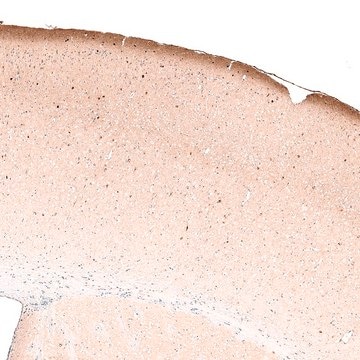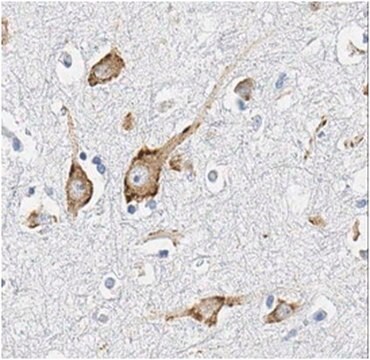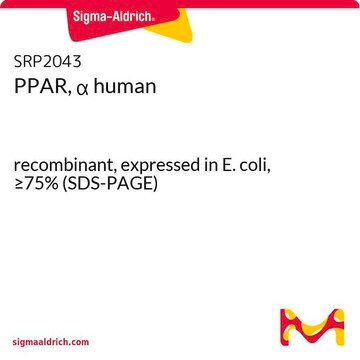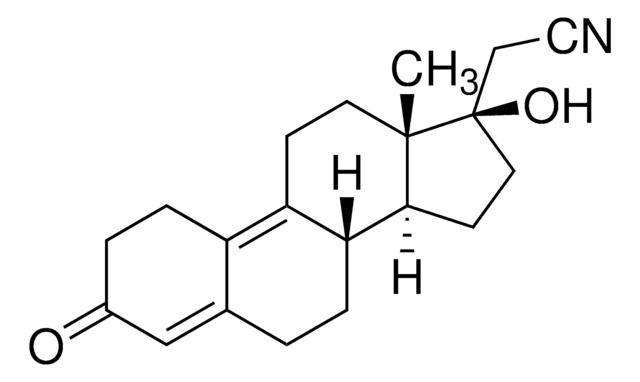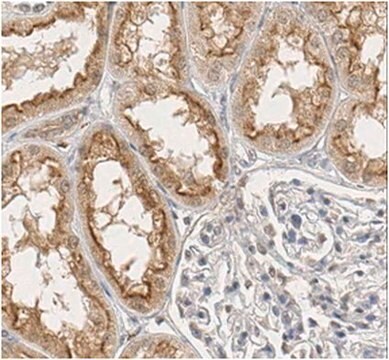ABE69
Anti-PTIP Antibody
from chicken, purified by affinity chromatography
Synonyme(s) :
PAX interacting (with transcription-activation domain) protein 1, PAX transactivation activation domain-interacting protein, protein encoded by CAG trinucleotide repeats, PAX transcription activation domain interacting protein 1 like
About This Item
Produits recommandés
Source biologique
chicken
Niveau de qualité
Forme d'anticorps
affinity isolated antibody
Type de produit anticorps
primary antibodies
Clone
polyclonal
Produit purifié par
affinity chromatography
Espèces réactives
rat, mouse, human
Technique(s)
immunofluorescence: suitable
immunohistochemistry: suitable
western blot: suitable
Numéro d'accès NCBI
Numéro d'accès UniProt
Conditions d'expédition
wet ice
Modification post-traductionnelle de la cible
unmodified
Informations sur le gène
human ... PAXIP1(22976)
Description générale
Immunogène
Application
Immunofluorescence Analysis: A represenative lot was used by an independent laboratory in IF (Lechner, M., et al. (2000).
Epigenetics & Nuclear Function
Chromatin Biology
Qualité
Western Blot Analysis: A 1:1,000 dilution of this antibody detected PTIP in 10 µg of A431 cell lysate.
Description de la cible
Other isoforms may be observed in some lysates.
Forme physique
Stockage et stabilité
Remarque sur l'analyse
A431 cell lysate
Clause de non-responsabilité
Not finding the right product?
Try our Outil de sélection de produits.
Code de la classe de stockage
12 - Non Combustible Liquids
Classe de danger pour l'eau (WGK)
WGK 1
Point d'éclair (°F)
Not applicable
Point d'éclair (°C)
Not applicable
Certificats d'analyse (COA)
Recherchez un Certificats d'analyse (COA) en saisissant le numéro de lot du produit. Les numéros de lot figurent sur l'étiquette du produit après les mots "Lot" ou "Batch".
Déjà en possession de ce produit ?
Retrouvez la documentation relative aux produits que vous avez récemment achetés dans la Bibliothèque de documents.
Notre équipe de scientifiques dispose d'une expérience dans tous les secteurs de la recherche, notamment en sciences de la vie, science des matériaux, synthèse chimique, chromatographie, analyse et dans de nombreux autres domaines..
Contacter notre Service technique